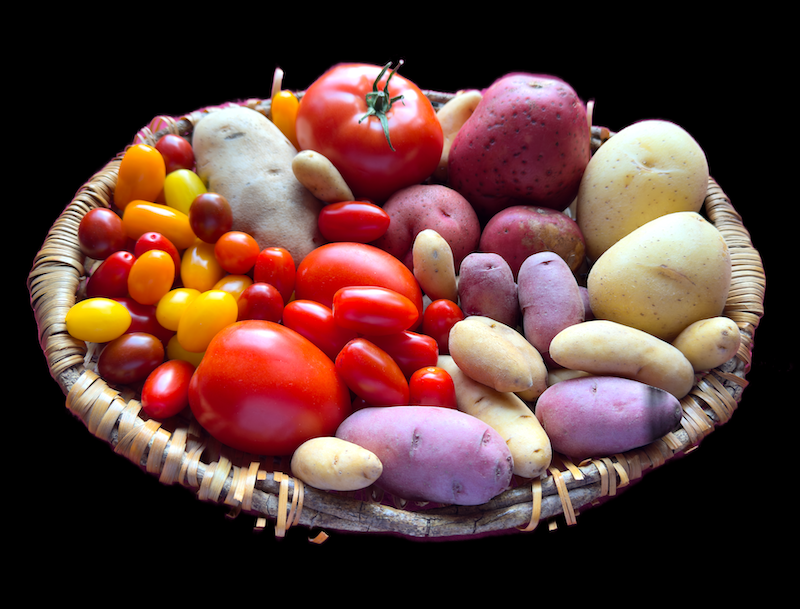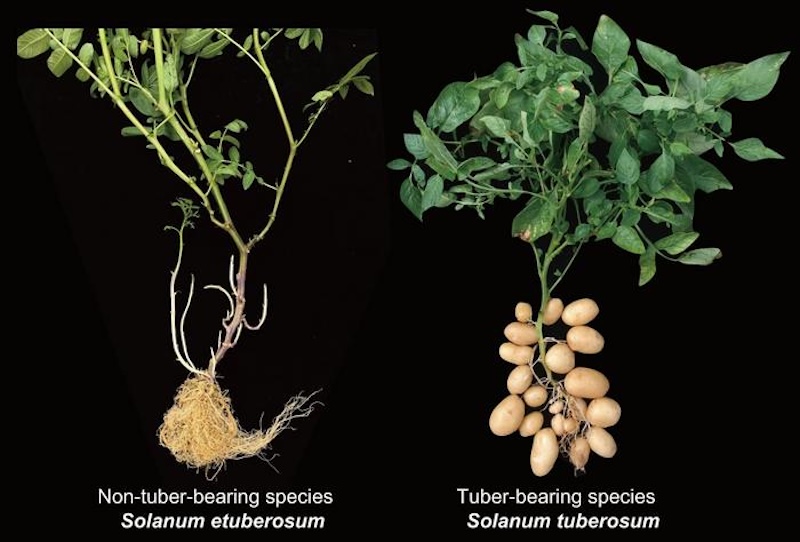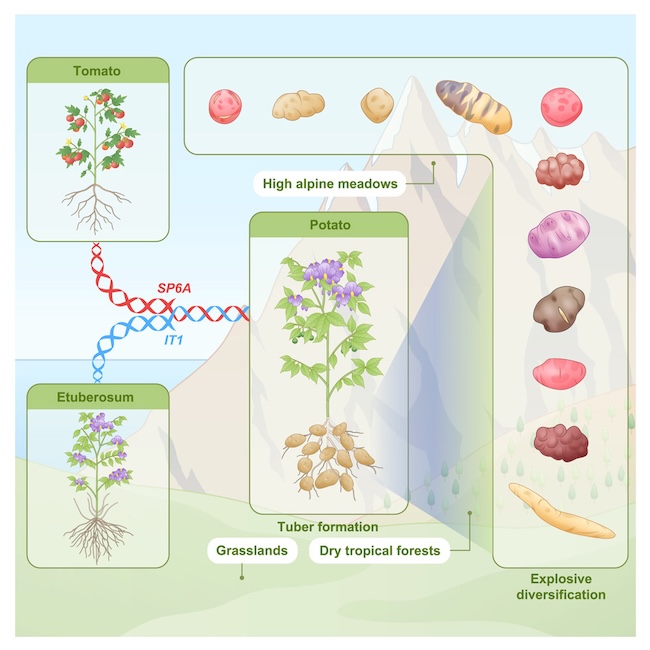
- Potatoes descended in part from wild tomatoes about 9 million years ago.
- Genetic studies show modern potatoes carry DNA from a tomato ancestor.
- The development of tubers helped early potatoes survive harsh environments, leading to their widespread adaptation and species diversity.
Potatoes and tomatoes linked in evolution
Potatoes and tomatoes don’t look alike or taste alike. One is a starchy root used to make our favorite comfort foods, like French fries and mashed potatoes. The other grows on a bush and has diverse uses in cooking around the world. But surprise! A new genetic study reveals that the potato plant, which evolved 9 million years ago, arose as a new species created from the hybridization of a tomato plant and a plant called etuberosum.
Etuberosum means without tubers.
Sanwen Huang, at the Chinese Academy of Agricultural Sciences, is a co-author of the paper on this study. He said, in a statement issued by the Natural History Museum at Tring, Hertfordshire, in the UK:
Our findings show how a hybridization event between species can spark the evolution of new traits, allowing even more species to emerge. We’ve finally solved the mystery of where potatoes came from.
The researchers published their finding in the peer-reviewed journal Cell on July 31, 2025.
A wild tomato plant interbred with a potato-like species
Potatoes (Solanum tuberosum) are among the most important staple crops in the world. They were domesticated about 7,000 to 10,000 years ago in Peru and Bolivia. Then, in the late 16th century, potatoes were introduced to Europe by Spanish conquistadors that invaded Peru. From there, potatoes gradually spread around the world.
But the origin of potato plants had long puzzled scientists.
Modern potato plants appear similar to three potato-like plants called etuberosum, found in Chile. They look like potato plants but don’t have tubers, large roots that hold starch.
According to this new study, etuberosums and wild tomatoes arose from a common ancestor about 14 million years ago. For five million years, they diverged to create different species.
Then, about 9 million years ago, a wild tomato and an etuberosum interbred to create a new species, the first potato plant that had starchy tubers.

Tracing the origins potatoes
The scientists studied the genomes – the genetic information in organisms – of 450 cultivated modern potato varieties. They also looked at the genome of 56 wild potato species, some that are ancestors of the cultivated potatoes we eat today.

Every potato they sampled had a balanced mix of genetic material from etuberosum and tomato plants. This indicated that potatoes arose from a hybrid of these two plants.
In addition, they found a gene called SP6A. This gene functioned as a master switch that instructed the plant to create tubers. Interestingly, SP6A came from the tomato parent. Another gene called IT1 controlled the formation of tubers, and it came from the etuberosum parent. Both these genes, one from each parent, are responsible for the starchy tubers in potato plants.
Early potatoes adapted well to a changing environment
Not long after potato plants emerged, the Andes mountains experienced a growth spurt, about six to ten million years ago. This upheaval created ecological changes in the region.
Early potatoes, with their ability to store nutrients in tubers, were able to survive in the resulting harsh environments.
Another advantage held by potatoes is that the tubers could reproduce without the need for pollination; potatoes did not need seeds to spread. They could simply sprout new plants from the tubers.
As a result of these traits, early potato plants were able to occupy diverse ecosystems from mild-temperature grasslands to cold alpine meadows of Central America and South America.
Huang commented:
Evolving a tuber gave potatoes a huge advantage in harsh environments, fueling an explosion of new species and contributing to the rich diversity of potatoes we see and rely on today.
Tiina Särkinen, a paper co-author, said in a statement released by the Natural History Museum, London:
These results make us look at our humble potato in a very different light: the potato and all its wild relatives came to exist thanks to a chance encounter of two very different individuals. That’s actually quite romantic. The origin of many of our species isn’t a simple story, and it’s very exciting that we can now discover these tangled, complex origins thanks to the wealth of genomic data.
Bottom line: A new study suggests that potatoes and tomatoes are linked evolutionarily, from a combination of genes 9 million years ago.
Source: Ancient hybridization underlies tuberization and radiation of the potato lineage











